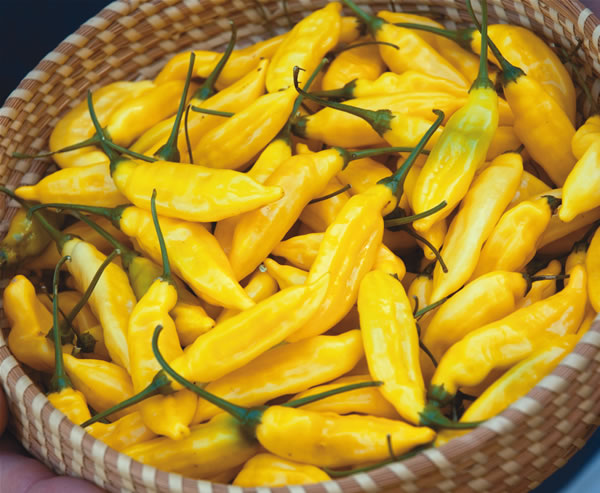 Hot pepper is a vegetable with a spicy taste, widely used in culinary art. Mistresses like to use it for pickles and pickles. Consider the varieties popular in central Russia.
Hot pepper is a vegetable with a spicy taste, widely used in culinary art. Mistresses like to use it for pickles and pickles. Consider the varieties popular in central Russia.
Content
Vegetable features
This culture is unpretentious, compared with bell pepper. Actively bears fruit in the beds, in the greenhouses and on the loggia. Under the vegetable does not require a lot of space. To provide yourself with a good harvest, it is enough to grow several bushes. It is difficult to eat this pepper fresh, and a small amount is enough for seasoning.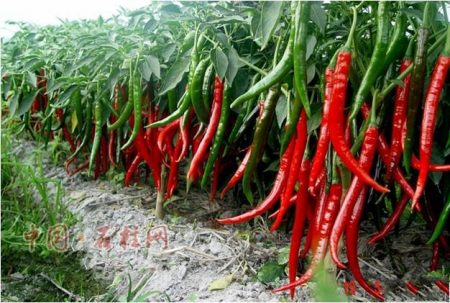
Before purchasing seeds, you need to understand what a particular variety is used for. There are raw peppers suitable for consumption, as their taste is slightly spicy. Others are more suitable for supplementing dishes. It is desirable to dry or grind completely burning fruits, and in this form to use as seasoning.
Varieties also differ in shape, color, fruit ripening period. Late-ripe species of Chile are best grown at home or in a greenhouse so that the crop has time to form.
What peppers can be grown in the suburbs
There are many varieties of Chile that can grow and produce fruits in this region. Some of them are not eaten at all, but used to decorate the interior. After all, a small bush on which numerous bright fruits sparkle looks very beautiful.
Superchill
Hybrid early high-yielding variety. Fruits in 70 days after transplanting seedlings.
The bush is low, about 40-50 cm. Therefore, it is convenient to grow it on windows and in greenhouses. The vegetable is not sensitive to arid climates and viruses.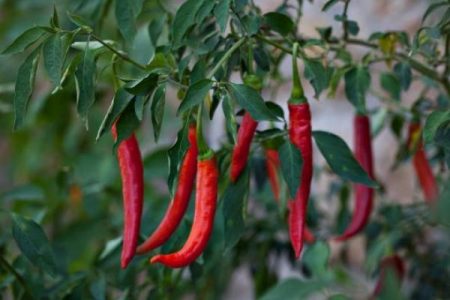
Ripening, the fruits repeatedly change color. From green, they turn into yellow, after which they become bright orange, and finally red. The pods are elongated, their length on the same bush is the same and is 6-7 cm.
The variety is used for preservation, drying, seasoning.
Jalapeno
A very popular hot pepper with a slightly sweet taste. It bears fruit 80-85 days after transplanting seedlings. It can grow both in the greenhouse and in the beds. The height of the bush is 1 m., Its width is rapidly increasing. In one season, 3 bushes can give 6-8 kg. fruits. Plants bloom profusely, but not all flowers produce peppers.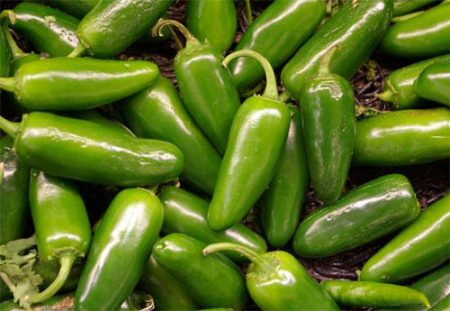
Adjika
Medium grade, well adapted to open ground conditions. Seeds for seedlings are planted at the end of winter. Sprouts, which are 70-80 days old, are placed on the garden bed. The culture is unpretentious, resistant to cold climates. Bushes are tall, sprawling, they need to be tied up and formed. Large fruits weigh about 100 grams and have a bright red color. Their taste remains sharp in the preparations: pickles, marinades, dried peppers.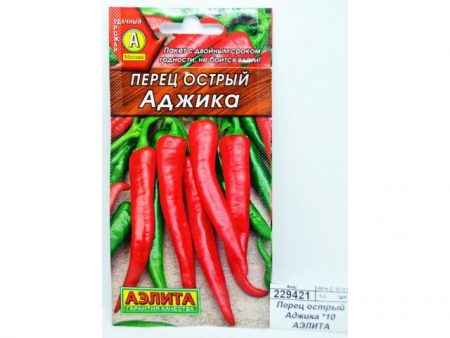
Jamaican Red
The pods are in the shape of a bells. They are tetrahedral, the base is round, and the bottom is pointed. Peppers themselves are small, but their flesh is very fleshy and thick. Used for preservation and additives to dishes. The plant bears fruit 92-98 days after sowing seeds. Suitable for both open ground and greenhouse, grown in seedlings. It bears fruit abundantly: one bush 0.8 m high gives 3-4 kg. fruits.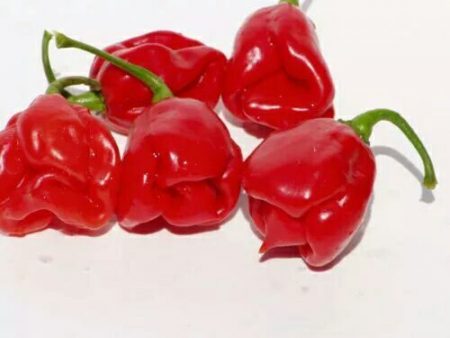
This very burning variety is easily recognizable due to the special shape of the fruit.
Miracle of Moscow Region
Hot pepper, suitable for greenhouses near Moscow. It gives a good harvest in open beds. Vegetation lasts 120-130 days. The fruits are neat, slightly elongated. Pepper size is up to 20 cm.Suitable for home salting, remains sharp when dried.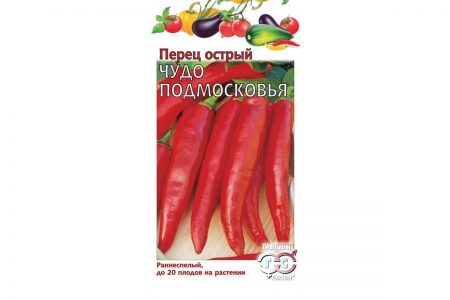
Multi-colored Aji
One of the early varieties. Gives a plentiful crop, regardless of growing conditions. One bush can form yellow, red and purple peppers. Such a plant will perfectly decorate the windowsill. This is a Peruvian variety with an unusual citrus flavor.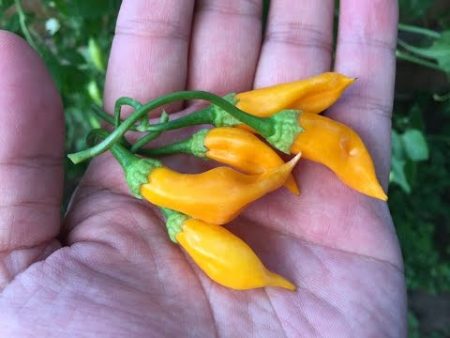
Habanero
The sharpest variety. Heart-shaped pods weigh 12-17 grams. Habanero includes several varieties that differ in the color of the fruit. They are orange, red, burgundy and brown. Bushes with red peppers - the highest, and with orange - the largest. It can be cultivated in a greenhouse, on a window or in open beds. The growing season is 92-110 days. The variety loves moisture, so it must be watered periodically.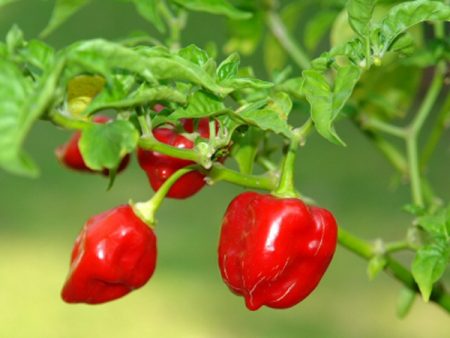
The Queen of Spades
This unusual pepper can be grown all year round. The bushes are low, only 30 cm. The fruits have the shape of a cone, painted in yellow or purple. They grow upward, outwardly look like small candles. The variety is decorative, but also suitable for eating. Peppers can be eaten raw, canned, dried, ground.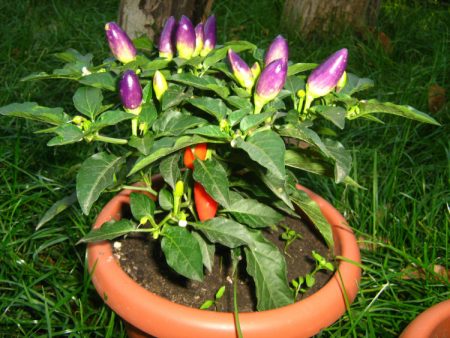
Vizier
Not very hot peppers grown in greenhouses. It is considered a late ripening variety. Fruits appear 120-125 days after planting seeds. The pods have a non-standard, turban-like shape. At the beginning of the formation, the fruits are green; at the end of ripening, they are bright red. The bush looks like a mini-tree with a round crown.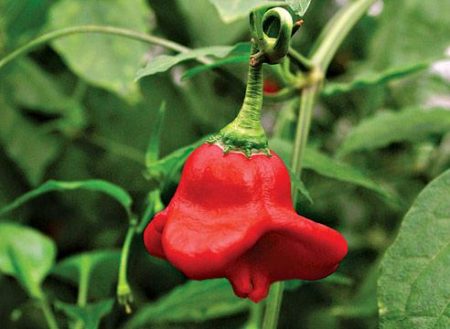
Twinkle
Medium grade. Suitable for growing in greenhouses and open beds. Greenhouse plants yield up to 4 kg. From one square meter, and garden - up to 3.5 in a favorable climate. Fruits are bright red, elongated, large, with a slightly curved tip. Ripe peppers weigh 30-40 grams. The height of the bush is 35-40 cm.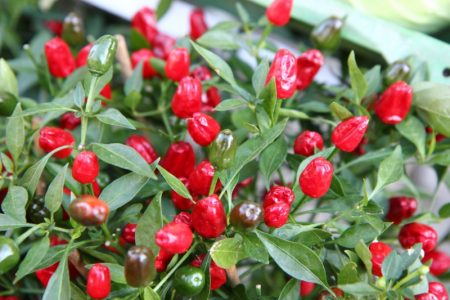
Bully
The variety is preferably grown in closed greenhouses. It can bring a good crop in the open, but the pods will look different. Vegetative period: 105-115 days. The fruits have a bright red color, they are elongated and slightly wrinkled. Suitable for drying and preservation. Fresh peppers can be stored for 1 month.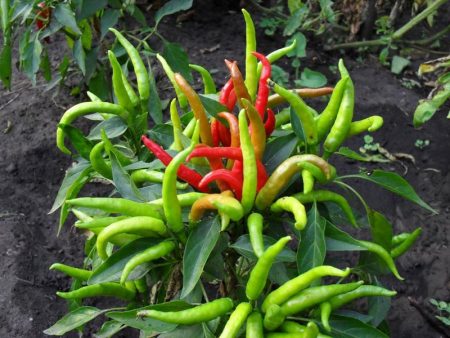
Red fat
One of the varieties beloved by cooks, as its fruits are large and thick-walled. They are 16-18 cm in length, 3-4 cm in diameter. The variety is medium, giving a high-quality crop both in the garden and in the greenhouse. The bushes are small, neat. Plants bear fruit amicably and abundantly.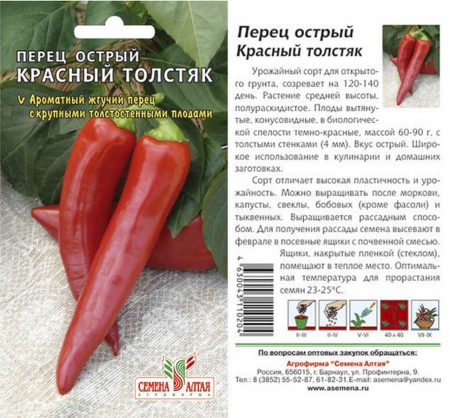
Reviews
Visitors to garden sites share with each other their impressions of the varieties described above. Here are some examples of statements:
“My miracle grew near Moscow and Astrakhan. They gave a good harvest, but on the package of Miracle the length is 20-25 cm, and I got no more than 15. Dwarf peppers also grow in my garden, but I don’t know how to use them yet ”(Alena);
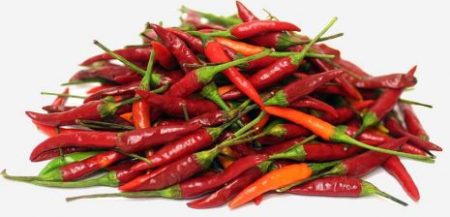
“I bought pepper seeds Bouquet of the East from the company Zedek. I read that he is medium-sharp. For 2 years I tried to grow a vegetable, but this season of 10 seeds only 1 sprouted ... An unusual bush turned out, the fruits are not the same as other peppers, they grow up. Harvested, wanted to add to the soup. Well, I’m used to that hot peppers can be fresh, I took a bite, as always. After which it was difficult to eat, because I had never tried such bitterness! But I still decided to collect the seeds for planting, so hot pepper is also useful ”(Valentina);
“Last year we had a red jalapeno growing up. He really is not very bitter, weighs 40 grams. The walls of the pepper are thick, as if he himself were in a cobweb. There were 4 bushes in the greenhouse, so they took a decent harvest. This time I didn’t plant, because I decided to try other varieties. And he is not sharp enough, I think. But pepper itself is good ”(Anna);
“In a good summer, Jalapeno grows well in the garden. But you can remove the normal harvest of Habanero only after 2 seasons, so in summer it should grow in a greenhouse, and in winter - on a window ”(Irina)
How to grow red hot pepper in the suburbs?
This culture needs heat, water and lighting. The best crop in the open field can be obtained if it turned out to be a warm, dry summer. At the same time, do not forget about watering.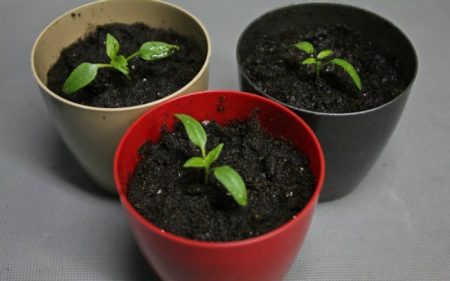
Without additional protection, red Chile is usually cultivated in the south of our country. But the varieties mentioned above are tolerant of the conditions of the central region.
Experienced gardeners do this: before warming, they grow a vegetable under a shelter, which is removed with the onset of favorable weather.
At a temperature of +13, the culture stops growing, and at 0 it dies. If the temperature difference is significant day and night, the buds and ovaries fall. The same is possible with overheating of peppers. A shelter protects the plant from excessive cold and heat. Of course, pepper will be more comfortable in a greenhouse or greenhouse, where constant temperature and humidity are maintained.
Shrubby burning vegetables need maximum lighting. In its absence, the plants stretch, become brittle and may break.
Culture develops well only in rich, moist and warm soil. Neutral loams and sandy loams are ideal for such pepper. If the plant does not have enough water, the fruits become small, curved.
Sweet and hot peppers should not grow close together. In order to avoid pollination, in which the bell pepper tastes like bitter, ridges with other crops are placed between them. It is advisable to plant these crops on different sides of any structure.
Low-growing peppers grow best on windows where they are not constrained by anything, and there is always enough light.
Having considered the best hot pepper varieties suitable for the Moscow region, we can say that in this region the culture is grown successfully. To get a good harvest, you just need to follow simple recommendations.




 Calorie pepper stuffed with meat and rice - BZHU per 100 grams
Calorie pepper stuffed with meat and rice - BZHU per 100 grams Gorky pepper - the best varieties for open ground
Gorky pepper - the best varieties for open ground Hot pepper seeds - the best varieties for open ground and reviews
Hot pepper seeds - the best varieties for open ground and reviews Capsicum tincture for hair - how to use and reviews
Capsicum tincture for hair - how to use and reviews